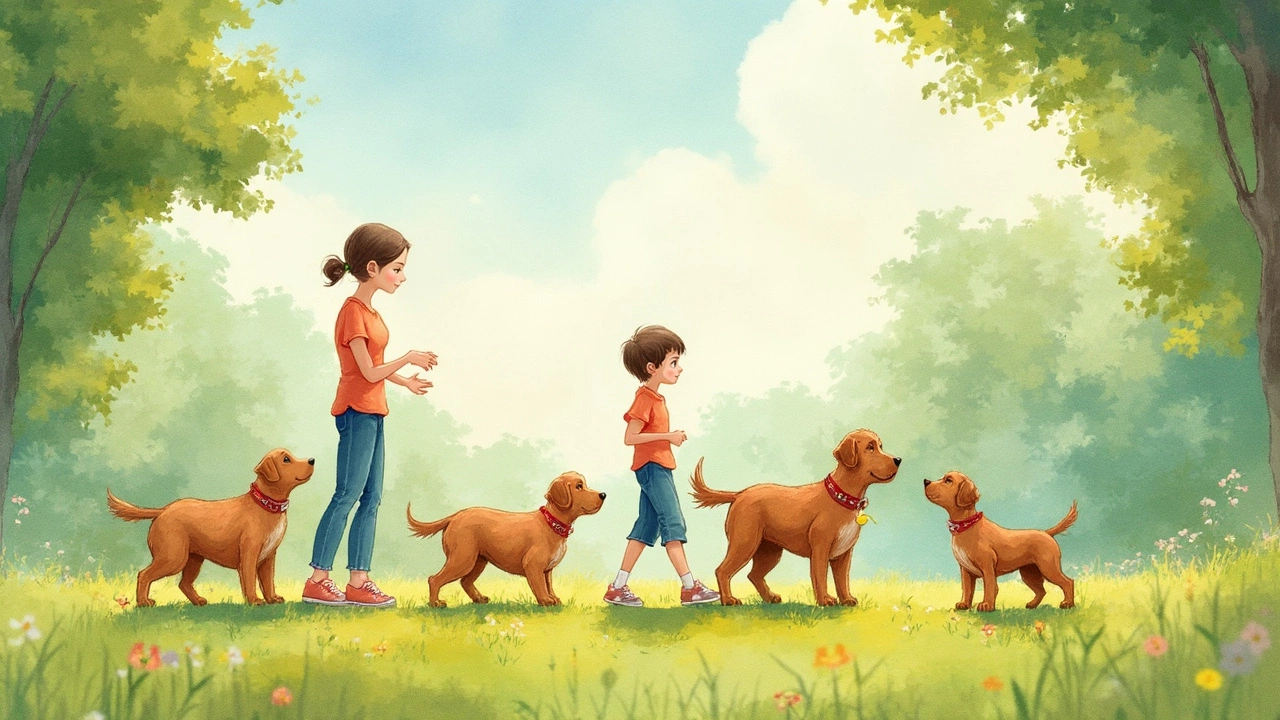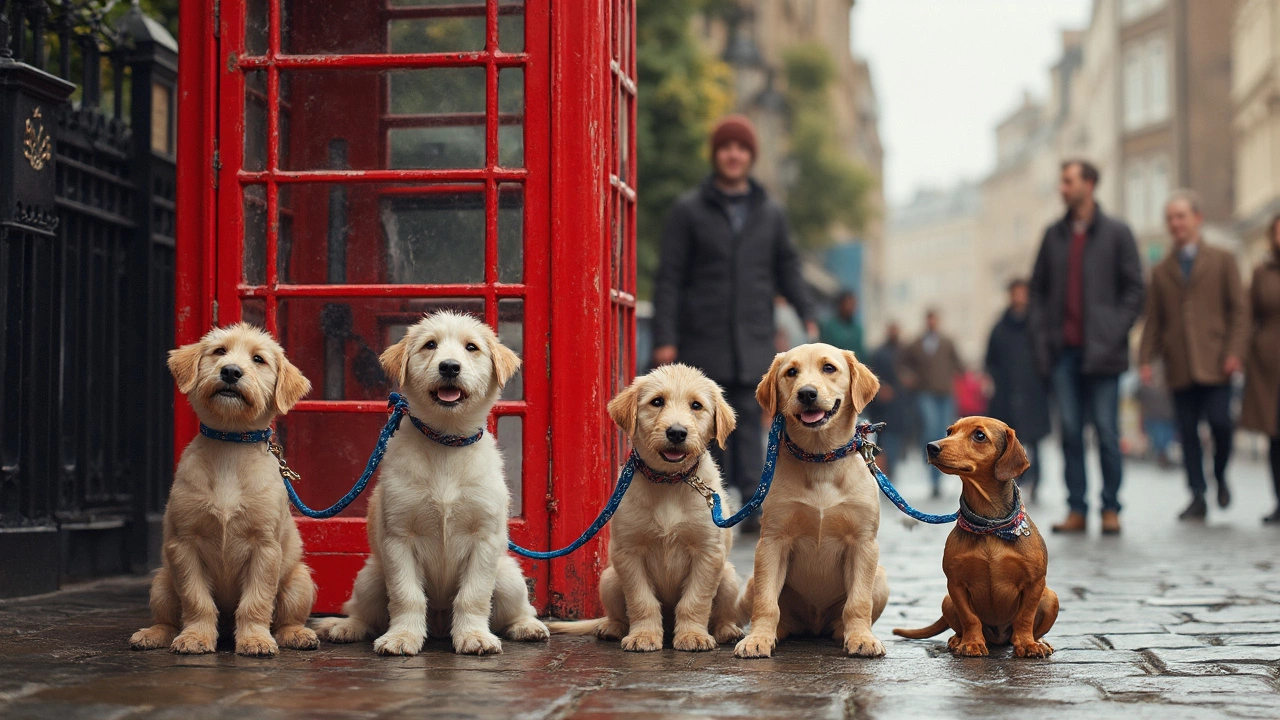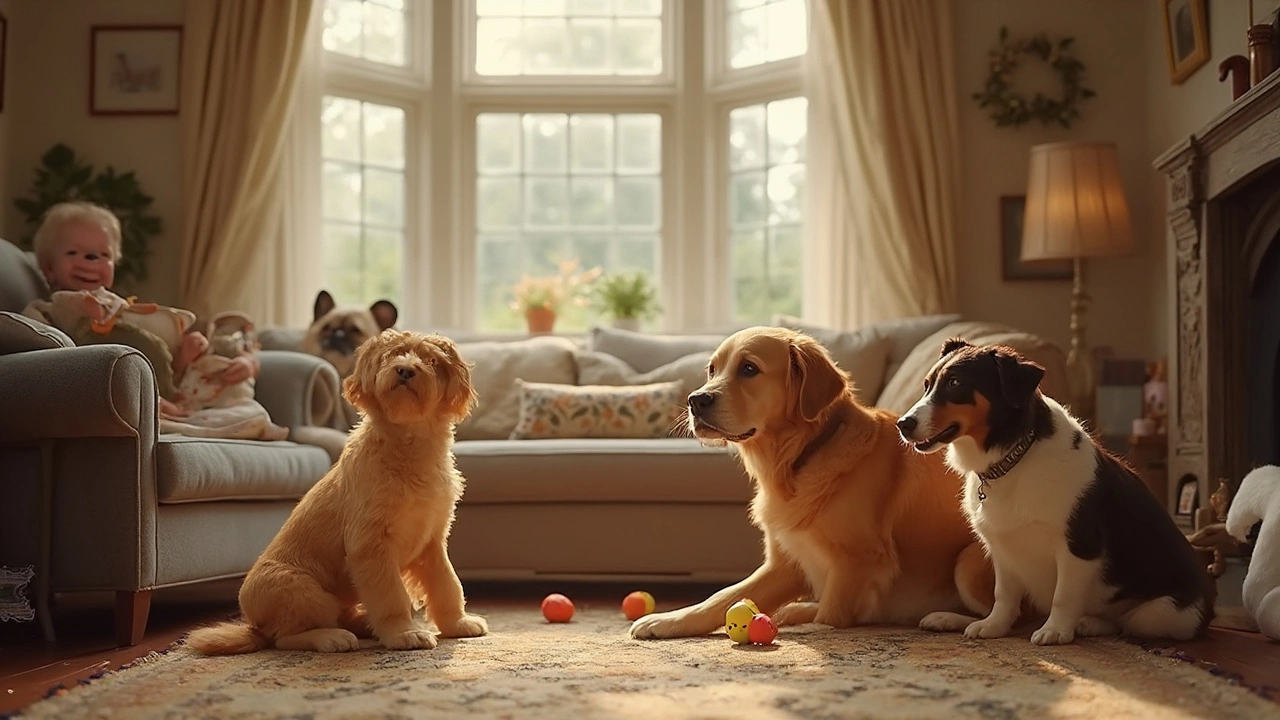You’d think there would be a clear moment when your puppy suddenly grows up—maybe they stop chewing shoes, or their paws finally fit their body. Not so fast. The truth is, puppies don't become adults overnight. The age when a puppy stops being a puppy depends on their breed, size, and even their own unique quirks.
For small breeds, the shift into adulthood can start as early as nine months. Big breeds? Sometimes you’ll still see that dopey puppy vibe until they’re closer to two years old. Think about it: a Chihuahua matures way faster than a Great Dane. So if you’re wondering how long you'll have that adorable puppy energy in your house, look at what kind of dog you have first.
Why does it matter when your puppy turns into an adult dog? Puppy care needs change as they grow. Their food, how much exercise they need, and even how you train them all need little tweaks once the puppy stage passes. Missing the signs means you can end up with a bored, stubborn, or awkward ‘teen’ pup on your hands—and trust me, no one wants that drama if they can help it.
- Not All Puppies Grow Up at the Same Pace
- Spotting the Physical Signs of Growing Up
- Behavioral Clues: Puppy to Teenager
- When Is It Time to Change Their Routine?
- Helping Your Not-So-Little Puppy Adjust
Not All Puppies Grow Up at the Same Pace
This might surprise you, but there’s no standard calendar for when a puppy becomes an adult dog. Size and breed make a huge difference. Tiny breeds like Yorkies and Chihuahuas can be fully grown before they turn one, while big breeds like Labs and German Shepherds don’t hit adulthood until 18 months to two years. Giant breeds such as Great Danes? Some vets say they don’t fully mature until closer to three years old.
Here’s how it usually breaks down by size, which is the main factor in the whole puppy age stages thing:
| Breed Size | When Puppyhood Ends |
|---|---|
| Small (up to 25 lbs) | 9-12 months |
| Medium (25-50 lbs) | 12-15 months |
| Large (50-100 lbs) | 15-18 months |
| Giant (over 100 lbs) | 18-36 months |
But there’s more. Mixed-breed dogs might mature somewhere between the parent breeds, so if you adopted a rescue and you’re not sure what’s in the mix, it helps to go by their size and growth speed.
Early signs your puppy is growing up usually show up in their body first—legs and chest filling out, fewer clumsy tumbles, and adult teeth replacing baby ones. Don’t be tricked by appearances, though. Even if your big puppy looks fully grown, they are still working through puppy development brain-wise and may act goofy or wild for a while.
If you’ve got more than one dog at home, you’ll probably notice each one hits milestones on their own schedule. My kid Darcy once joked that our spaniel was a grown-up at six months, but our neighbor’s retriever acted like a puppy until he was three. Turns out, both can be true depending on the dog’s breed and genetics.
Spotting the Physical Signs of Growing Up
When does your furry sidekick stop being a puppy on the outside? Puppy age stages aren't just about how big they look, but there are some clear changes you can't miss if you know what to watch for.
The most obvious sign is their size. Most puppy development charts show a small breed will reach their adult height and weight by around 9-12 months. A Labrador or Golden Retriever? More like 12-18 months. Giant breeds, like a Mastiff or Great Dane, can keep packing on the pounds and inches until they're two years old or more.
Besides size, there are other physical giveaways:
- Teeth: Puppy teeth start falling out between 4-7 months and get swapped for bigger, stronger adult teeth. If you’re past the teething chaos, you're one step closer to grown up status.
- Coat changes: Many breeds shed their soft puppy fur and grow in a thicker, shinier adult coat between 6-12 months. Sometimes even the color shifts.
- Body shape: That pudgy, round puppy belly usually slims down as muscles develop and bones lengthen. They start to look more balanced and less like a potato on legs.
- Leg growth: Those famously oversized paws and ears? They’ll start to look more proportionate as your pup fills out.
Don’t just take my word for it. The American Kennel Club says,
"Small and medium-sized dogs are generally fully grown by around 12 months, while large and giant breeds can take up to two years to finish growing."
If you’re curious about where your pup lands, here’s a quick breakdown based on breed size:
| Breed Size | Age Fully Grown |
|---|---|
| Small | 9-12 months |
| Medium | 12-15 months |
| Large | 15-18 months |
| Giant | 18-24 months |
Of course, no two dogs are carbon copies. If your beagle still looks puppyish after her first birthday or your shepherd’s ears suddenly perk up at 16 months, that’s all part of the fun mix of genetics and puppy development. Bottom line: watch for the teeth, coat, shape, and size. These are your clearest clues that your “puppy” may not be a puppy for much longer.

Behavioral Clues: Puppy to Teenager
The jump from puppy to teenager isn’t just about size. You’ll spot a ton of changes in how your dog acts, which can totally catch you off guard if you’re not ready. One minute your puppy follows you everywhere, the next they act like you’re invisible. That’s the classic ‘teen’ phase showing up, and trust me—it’s as real for puppies as it is for people.
One of the first clues is suddenly ignoring basic commands they used to know. “Sit” worked last week, but this week, not so much. That’s not them being spiteful, it’s just a normal part of puppy development called the ‘adolescent regression.’ Their brain is literally rewiring, and old tricks can go missing.
Another big flag is a burst of extra energy, or, on the flip side, acting lazier than usual. You might find your puppy counter-surfing or raiding the trash out of sheer curiosity, or just because they’re bored stiff. Test limits? Oh, absolutely—they’ll push every boundary you set, like a younger sibling sneaking cookies before dinner.
You might also notice some awkwardness around other dogs or people. Some pups become super shy, while others get bold and mouthy. Social skills are still a work in progress during this time, and this is the age when some dogs start showing guarding or protective behaviors for the first time.
To make it clearer, here’s what you can expect with a growing puppy:
- Ignoring commands: Re-learning ‘sit’ or ‘stay’ is normal during this stage.
- Testing boundaries: Jumping on counters, digging, or tugging on the leash more.
- Random energy swings: Hyper zoomies one day, couch potato the next.
- New social behaviors: Increased barking, shyness, or even mild stubbornness with people or other dogs.
- Chewing revival: Chewing comes back, especially as adult teeth finish coming in around 6-8 months.
If you’re wondering when your dog might hit these changes, here’s a quick look at typical ages by size:
| Breed Size | Puppy to Teenager Transition |
|---|---|
| Small | 6 – 9 months |
| Medium | 9 – 12 months |
| Large/Giant | 12 – 18+ months |
So if your puppy suddenly seems less predictable, congratulations—you’ve got a teenager on your hands. Keep up the positive training, add more problem-solving games, and don’t panic. This phase is a pain, but it means your dog is growing up exactly as they should.
When Is It Time to Change Their Routine?
If you’re raising a furball, the big question is: when do you shift from puppy care basics to an older dog routine? Most vets agree that by the time small breeds hit 10 to 12 months, and larger breeds hit 14 to 24 months, their needs change a bunch. But watch their behavior and growth, too—not just the calendar.
Here’s what to look out for when deciding it’s time to change up your pup’s daily life:
- Food: Puppies need higher-calorie, protein-rich food for growth. When their weight gain slows or your vet says it’s time, switch to adult dog food. This usually happens at the one-year mark for smaller dogs and closer to 18-24 months for big breeds. Some brands even have labels like “puppy,” “adult,” or “all life stages”—don’t ignore those!
- Exercise: When that crazy zoomie energy starts to balance out, adjust the playtimes. Young puppies can overdo it, but as their joints mature and muscles catch up, gentle, regular walks and more structured play help them burn energy the right way. Large breeds need special care—too much jumping early can hurt growing joints.
- Training: Once the basics are in place, step up the challenges. Adolescent dogs get bored easily. Keep them engaged with new tricks or puzzle games—it’s key for brain development.
- Socialization: As your dog grows, keep socializing in new places with new people and dogs. This builds confidence and cuts down on adult dog anxiety.
- Vet Visits: After finishing their puppy vaccine schedule (usually by 16 weeks), routine checkups slow down. This is a good time to ask your vet about spay/neuter timing, nutrition, and anything that feels ‘off.’
If you have a larger breed dog, the numbers really matter—they mature so much slower than little dogs. Here’s a quick cheat sheet:
| Dog Size | Switch to Adult Food | Full Physical Maturity |
|---|---|---|
| Toy & Small | 9-12 months | 10-12 months |
| Medium | 12-16 months | 12-18 months |
| Large & Giant | 16-24 months | 18-24 months |
Sticking with a puppy development routine too long can leave your dog restless or overweight. On the flip side, moving too fast can mess up joints and confuse your dog’s learning. The sweet spot? Pay attention to changes in your own dog, not just the numbers on the dog food bag.

Helping Your Not-So-Little Puppy Adjust
So, your pup’s legs are getting longer, the face is stretched out, and suddenly you’re living with a dog who looks grown but acts like a toddler one minute and a grumpy teen the next. This weird in-between phase is totally normal—but it needs a different approach when it comes to puppy care and routine.
First off, nutrition matters more than most people think. Most vets recommend switching from puppy food to adult dog food somewhere between 10-18 months, but bigger breeds may need to stay on puppy chow a little longer. Check the bag for guidelines—many brands have charts, but if you’re stuck, it’s worth a chat with your vet. Skipping this step can actually mess with your dog’s growth and energy levels.
Exercise is another area to watch. Adolescent dogs have crazy bursts of energy but also get tired fast—kind of like human kids. The trick is finding a balance: too much running and jumping can be tough on joints that aren’t done developing, especially for larger breeds. A good mix might look like shorter, more frequent walks, plus some training or puzzle games for mental exercise. Boredom is a big reason for things like chewing shoes or digging up the garden.
- Give them steady routines: consistent meal times, bathroom breaks, and bedtime help them know what to expect.
- Stay patient with their behavior changes: frustration or stubbornness usually means they’re testing limits, not being bad for fun.
- Work in short, positive training sessions: five to ten minute bursts keep them focused without overwhelming them.
- Upgrade toys: stronger jaws need tougher toys—don’t wait until your couch cushions pay the price.
If you’re dealing with sudden “selective hearing” or forgotten tricks, you’re not alone. Dogs going through this stage can seem to ignore commands they used to follow without blinking. That doesn’t mean you failed puppy training—it’s literally a phase as their brains mature. Solid, gentle reminders and a little extra patience go a long way.
About 70% of young dogs show some regression in learned behaviors during adolescence, according to a 2020 study from Newcastle University. This phase can last for a few months, but it passes faster if you stick with positive routines.
The key with a not-so-little puppy is this: don’t expect them to “just grow out of it.” Stay consistent, adapt your routine, and keep your expectations realistic. You’ll both get through the drama—and come out with a more confident, happy adult dog.
